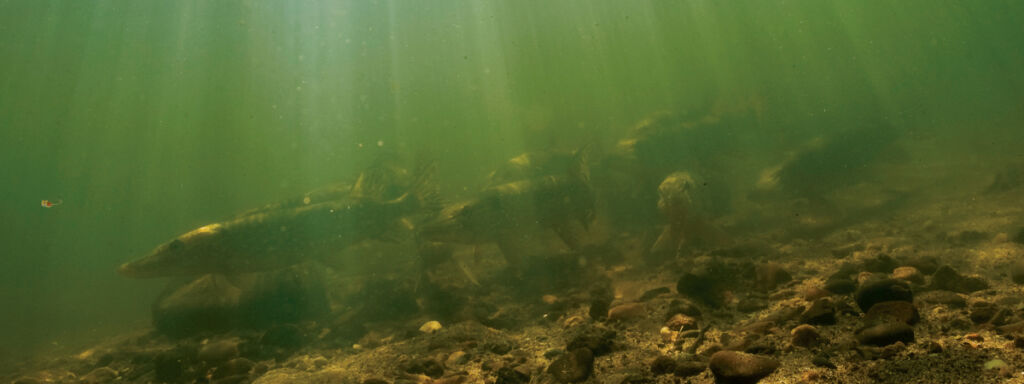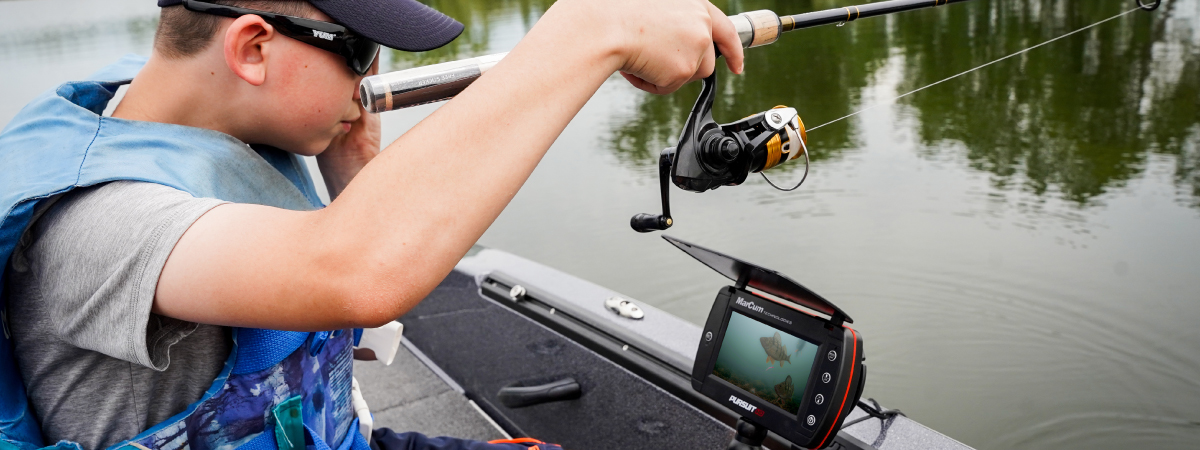How should I prepare
for the Minnesota Fishing Opener?
Bring your underwater Camera!

It’s amazing how many anglers have an underwater ice fishing camera for winter use, and forget to pack it in the boat for fishing opener. In fact, open-water applications abound when it comes to everything from species identification, to finding green weeds, or simply identifying water clarity traits from one end of the lake to another.
The fact that now your underwater camera for fishing can be so much more mobile is a major benefit to its use, and the fish-finding information you unlock with it is rather limitless. Here’s just a few ways and reasons to get more use from your winter camera, come spring, summer and fall.
Developing Vegetation
Not all “weeds” are created equal, as any fish who could talk would tell you. In much of the upper Midwest, cabbage and coontail reign supreme, especially in areas with curly pondweed, milfoil, or other invasive plants. Young, developing vegetation is easily studied at depth with the single drop of a small handheld underwater fishing camera.
In fact, using an underwater viewing system like the MarCum Pursuit offers you the ability to get everything from water temperature at depth, a key fish and bait-holding characteristic, all with the crispness of an HD display.

Bait-Finding Mission
Bait shows up well in the shallows when it’s warm, but quite often in the early season, the presence of bait is rather un-noticed, especially in less than clear water. In water shallower than 10 feet, it’s often hard for electronics to down-view or down-image given the smaller search cone angle.
That makes locating the presence and species of bait easier with an underwater camera, even if you first spot it with side-imaging. They can be fry, minnow species of little interest to fish, or the shallow spawning pod of shad or shiners you’ve been looking for.
No electronics can spill those secrets for you, and a camera like the Quest HD L with a manta head tracks well underwater and can cover underwater real-estate in the process. More importantly, it does all this with the largest image display MarCum makes, and the sharpest HD image too, making it easy to spot and ID quick-darting minnow species.
Species Surprises
We all want to avoid the idea of fishing for suckers when walleyes are the target, or chasing free-roaming crappies, only to find out that tullibee were what you’ve been marking. It’s a common problem with an easy solution. Especially when the boat is underway, even the most basic cameras can discern a walleye from a white bass.
That’s great for a value-based play like the MarCum 485C, but you might be surprised just how good it is for under $300. With the Manta head and provided tailfin, you can cover areas that hold fish while driving around, crossing areas off the list and finding new ones in the process.

Transition Time
Everybody hangs on the big point or first good chunk of structure near-shore come opener, but folks that do really well stay away from the crowd and find fish where others can’t. The first step is to locate hard-bottom spots among soft, and fish those transitions, but so often, a camera is what’s required to confirm abstract colors and shapes from standard sonar.
Quick deploy and drop cameras like the Recon 5+ offer great low-light viewing, multiple camera angle positions, and a host of on-screen monitoring variables, all in a mobile form factor that fits under a seat or in a glove-box. Spare no room, yet see every detail to find those hard-to-soft transition lines.

Study the Bite
So often, our opener plans for walleyes are foiled by bad weather, post-spawn blues, or even the full moon, but quite often there are crappie bites to be had. Especially if these are deep and the weather is cold like it so often is on a tough opener, camping on crappies ice-style is the best salve.
Cameras like the Mission SD L allow you to spot-lock or anchor, then adjust the camera to schools of crappies below and dunk bait in their face. Whether crappie minnows, euros, or even jigs and plastics, so often during hard bites, a camera makes all the difference. That’s especially true at depth with light-biting fish like crappies.
No matter your reason for toting the camera this spring, you’re certain to become a better angler for it. Moreover, you’re likely to find reasons and features that carry forward into ice fishing, all by simply stowing it in an empty hold. For the young or the young at heart, it’s also a built-in trip-extender, allowing all ages to enjoy and learn from the underwater world.









